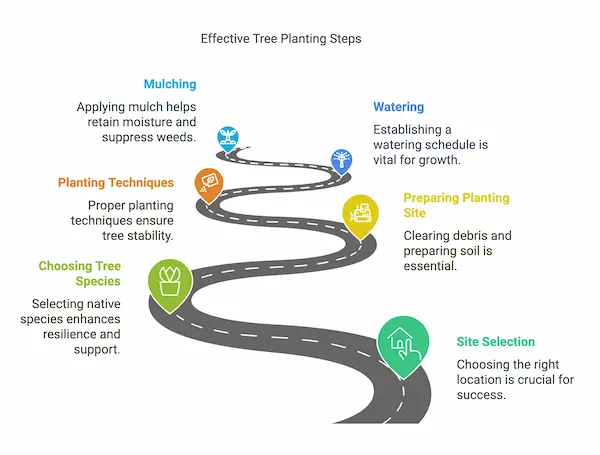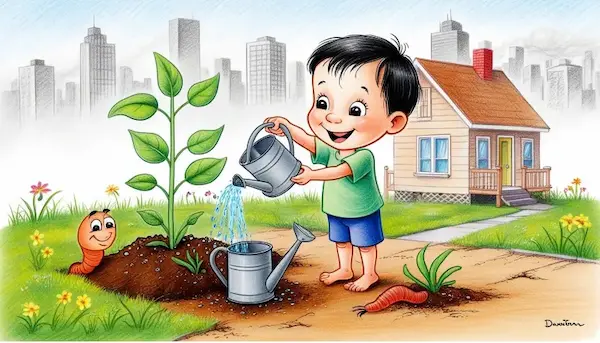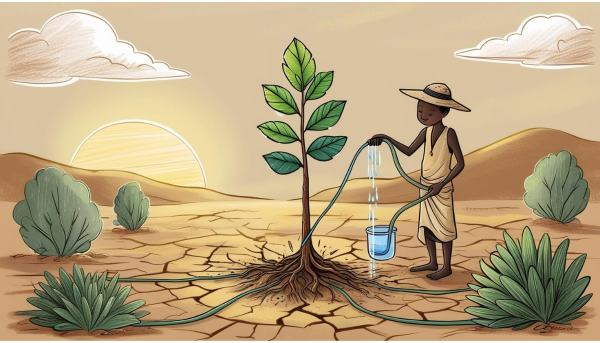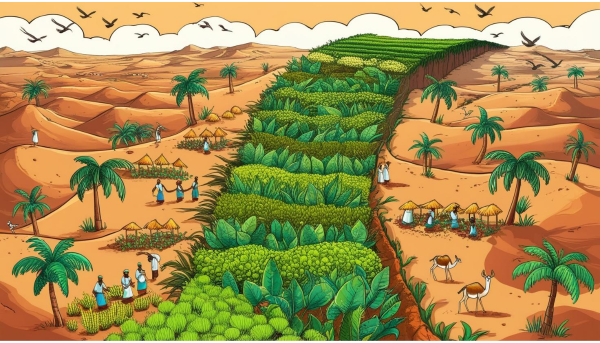Summary
Tree planting is a powerful tool to combat deforestation, restore ecosystems, and mitigate climate change. By planting trees, we preserve biodiversity, create habitats, and improve air and water quality. It’s about choosing the right species, preparing the soil, and ensuring proper care for long-term growth. From global initiatives like the Great Green Wall to community-based efforts, tree planting has proven transformative. It aligns with sustainability goals and offers economic and ecological benefits. Together, through collective action, we can heal the planet, one tree at a time. Planting trees isn’t just an act—it’s a legacy for future generations.
Table of Contents
Introduction
Have you ever thought about the incredible power a single tree holds? Tree planting is more than just an act of putting a seed into the ground—it’s a transformative journey that impacts our environment, our communities, and even our souls. It’s the perfect example of how small actions can lead to monumental change.
The world faces a massive challenge with deforestation. Entire ecosystems are disappearing, leaving behind barren lands and disrupted climates. But tree planting offers a solution. It's like giving the Earth a second chance—a way to heal its wounds and restore its natural beauty.
Beyond its ecological significance, tree planting is a deeply emotional act. It’s about hope, resilience, and the promise of a better future. Each tree planted is a declaration of love for our planet, a commitment to leave a greener world for generations to come. So, let’s embark on this journey together and explore the transformative power of tree planting.
Why Tree Planting Matters
Combating Deforestation
Have you ever wondered what the Earth would look like without its lush green cover? The rapid pace of deforestation is stripping the planet of its lungs. Tree planting is our most effective weapon to fight back. When we plant a tree, we’re not just filling an empty patch of land; we’re standing up against the destruction of forests that shelter countless species and sustain our climate.
Consider this: every tree planted is a shield against the harsh impacts of deforestation. It’s a promise to the generations that follow us—a promise of shade, life, and hope. By restoring forest cover, we’re giving the Earth a chance to breathe again. Isn't that worth striving for?
Restoring Lost Forest Cover
Imagine walking through a dense forest, the sunlight peeking through the canopy, the air rich with the scent of nature. Now imagine that same forest reduced to barren land. Heartbreaking, isn’t it? Tree planting can reverse this devastation. By reintroducing greenery, we can revive lost forest areas and rejuvenate ecosystems that were on the brink of collapse.
Restoring forest cover is not just an ecological act—it’s a deeply emotional journey of healing our planet. Each sapling we plant represents resilience and renewal, a testament to nature’s incredible ability to recover when given the chance.
Preserving Ecosystem Balance
Trees are like the glue that holds ecosystems together. From the tiniest insects to the largest mammals, countless species depend on trees for survival. When we plant trees, we’re rebuilding this delicate web of life. We’re ensuring that every chirp, buzz, and rustle in the forest continues to thrive.
Preserving ecosystem balance isn’t just about protecting animals; it’s about safeguarding the intricate connections that keep our world alive. Each tree we plant is a cornerstone in the cathedral of life, a beacon of harmony in a fragile world.
Enhancing Biodiversity
Have you ever thought about how trees act as homes? Not just for birds or squirrels but for entire communities of life. Planting trees brings biodiversity back to regions that have lost it. It’s like rolling out a welcome mat for nature’s inhabitants, inviting them to flourish once more.
The next time you plant a tree, think of it as creating a sanctuary—a safe haven for pollinators, nesting birds, and even the microscopic fungi that work tirelessly beneath the soil. Together, they form a thriving network of life that benefits us all.
Steps to Plant Trees Effectively

1. Site Selection
Choosing the right location is crucial for the success of tree planting. Consider the following factors:
Soil Quality: Test the soil to determine its pH, nutrient levels, and drainage capabilities.
Sunlight: Ensure the area receives adequate sunlight for the specific tree species you plan to plant.
Space: Assess the available space for growth, considering the mature size of the trees.
2. Choosing the Right Tree Species
Select tree species that are native to the area and suitable for the local climate. Native species are more resilient and provide better support for local wildlife. Research the growth habits, water needs, and potential diseases of the species you choose.
3. Preparing the Planting Site
Before planting, prepare the site by:
Clearing Debris: Remove any weeds, rocks, or debris that may hinder growth.
Soil Preparation: Loosen the soil to improve aeration and drainage. You may also amend the soil with organic matter if necessary.
4. Planting Techniques
Follow these steps for effective planting:
Digging the Hole: Create a hole that is twice as wide and as deep as the root ball of the tree.
Positioning the Tree: Place the tree in the hole, ensuring that the root collar is level with the soil surface.
Backfilling: Fill the hole with soil, gently tamping it down to eliminate air pockets.
5. Watering
Immediately after planting, water the tree thoroughly to help settle the soil around the roots. Establish a regular watering schedule, especially during the first few years, to ensure the tree receives adequate moisture.
6. Mulching
Apply a layer of organic mulch around the base of the tree to retain moisture, suppress weeds, and regulate soil temperature. Keep the mulch a few inches away from the trunk to prevent rot.
7. Protection
Protect young trees from pests and harsh weather conditions by:
Using Tree Guards: Install guards to prevent damage from animals.
Staking: If necessary, stake the tree to provide support until it establishes a strong root system.
8. Monitoring and Maintenance
Regularly check the health of the tree and perform necessary maintenance:
Pruning: Remove any dead or diseased branches to promote healthy growth.
Fertilizing: Apply fertilizer as needed based on soil tests and tree species requirements.
Choosing the Right Tree Species
Did you know that the success of tree planting begins with choosing the right species? It’s not as simple as picking the first sapling you see. Every region has its unique soil, climate, and ecosystem requirements. Native species often work best—they’re already adapted to the local environment and support indigenous wildlife.
On the other hand, introducing non-native species can sometimes do more harm than good. It’s a careful balancing act, one that ensures the tree you plant thrives and contributes positively to its surroundings. Isn’t it amazing how much thought goes into planting something as seemingly simple as a tree?
Preparing the Planting Site
A well-prepared site is the foundation of a healthy tree. Imagine building a house on shaky ground—it wouldn’t last long, right? Similarly, trees need stable, nutrient-rich soil to grow strong. Preparing the site involves clearing debris, tilling the soil, and ensuring proper drainage. It’s a labor of love, a process that rewards us with thriving greenery in the years to come.
Spacing and layout are equally important. Trees need room to grow, to stretch their roots, and to spread their branches. Crowding them too close can stunt their growth. So, the next time you plant a tree, think of it as giving it the personal space it needs to shine.
Ensuring Tree Health for Long-Term Growth
Planting a tree is just the beginning. Like any living being, trees need care and attention to thrive. Watering is crucial, especially in the early stages. Too much, and you risk drowning the roots; too little, and the tree struggles to survive. It’s about finding the perfect balance.
Pruning and maintenance are also key. Think of it as giving the tree a haircut—it keeps it healthy and encourages new growth. A well-maintained tree is not just a visual delight; it’s a lasting legacy for the planet.
Environmental Benefits of Tree Planting
Carbon Sequestration and Climate Change Mitigation
Did you know that trees are nature’s own carbon warriors? They absorb carbon dioxide—the very gas driving climate change—and store it safely within their trunks, roots, and leaves. Every tree planted is like a tiny shield against global warming. Isn’t it comforting to know that nature has built-in solutions to the crises we face?
Think about this: a single mature tree can absorb up to 48 pounds of CO2 per year. Now multiply that by millions of trees. The impact is staggering, isn’t it? Planting trees isn’t just an act of hope; it’s a direct action against climate change.
Improving Air and Water Quality
Have you ever stood under a tree on a hot day and felt the air around you cool down? That’s the magic of trees. They don’t just provide shade—they filter the air, trapping pollutants and releasing oxygen. Breathing feels a little easier, doesn’t it?
Trees also play a vital role in maintaining water quality. Their roots prevent soil erosion, filter runoff, and help replenish groundwater reserves. When we plant trees, we’re not just greening the land—we’re purifying the essentials of life itself: air and water.
Preventing Soil Erosion and Enhancing Fertility
Have you ever seen rainwater carrying away topsoil from a bare patch of land? It’s heartbreaking to watch fertile soil disappear. Trees, with their complex root systems, hold the soil in place, preventing erosion and preserving the land’s productivity.
What’s more, fallen leaves decompose and enrich the soil with nutrients. It’s nature’s way of giving back. Planting trees isn’t just about saving the environment—it’s about nurturing the ground beneath our feet, ensuring it stays fertile for future generations.
Educational and Cultural Importance

Teaching the Next Generation
Have you ever watched children plant their first sapling? Their excitement is contagious, isn’t it? Tree planting is one of the best ways to teach the next generation about environmental stewardship. It’s a hands-on lesson in responsibility, patience, and care.
Schools that incorporate tree planting into their activities create lasting memories for students, inspiring them to grow into environmentally conscious adults. Imagine the ripple effect of these small acts of learning—how many future forests could sprout from today’s lessons?
Cultural and Spiritual Connections
For centuries, trees have held deep cultural and spiritual significance in societies around the world. From sacred groves to ancient oaks symbolizing wisdom, trees are woven into the fabric of our collective consciousness.
When we plant a tree, we’re participating in something timeless. It’s a way to honor traditions, connect with the past, and create a legacy for the future. Isn’t it beautiful how a single act can carry so much meaning?
Challenges in Tree Planting and How to Overcome Them

Surviving Harsh Climates
Have you ever planted a tree only to see it struggle in extreme weather? It’s heartbreaking, but it’s also a reminder of the challenges our planet faces. Harsh climates, from droughts to floods, make tree planting harder—but not impossible.
Choosing climate-resilient species and employing innovative techniques like drip irrigation can help trees survive and thrive. It’s a challenge worth tackling, don’t you think?
Ensuring Long-Term Maintenance
Planting a tree is just the first step; nurturing it is where the real work begins. Without proper care, saplings can wither away, and the effort is wasted. So how do we ensure their survival? Community involvement is key. When people feel ownership over trees, they’re more likely to care for them.
Tree planting isn’t a one-time act; it’s a commitment. But isn’t that what makes it so rewarding?
Impact Stories: Global and Local Success

Large-Scale Reforestation Projects
Have you ever heard of a project so vast that it can be seen from space? The Great Green Wall initiative in Africa is one such effort—a bold vision to restore degraded landscapes and combat desertification. Stretching across 11 countries, this ambitious project is more than just planting trees; it’s about transforming lives and securing the future of millions who depend on the land.
And then there’s China’s Grain for Green Program, which turned barren hillsides into flourishing forests. Imagine the difference it has made—not only in restoring nature but also in uplifting local communities by providing jobs and improving soil quality. These are not just stories; they are proof that reforestation can spark hope on a global scale.
Community-Based Tree Planting Efforts
On a smaller scale, communities around the world are making a huge impact. Think of schoolchildren planting trees in their playgrounds or neighborhoods coming together for weekend tree-planting drives. These efforts might not seem as monumental as global initiatives, but they hold the power of grassroots change.
Every sapling planted by these groups represents a shared dream—a greener, healthier future. It’s heartwarming to see how collective action can bring about a ripple effect, inspiring others to join hands and make a difference.
Urban Forestry Initiatives
City life often feels disconnected from nature, doesn’t it? But urban forestry is bridging that gap. Cities like Singapore have embraced the concept, integrating trees into urban landscapes to create “city lungs.” Have you walked under the canopy of a tree-lined street and felt the air cooler? That’s the magic of urban forestry at work.
It’s not just about aesthetics—it’s about bringing nature back into our concrete jungles. These initiatives show that even in the busiest cities, there’s room for trees and the peace they bring.
Measurable Environmental Benefits
What if I told you that the air you breathe, the water you drink, and the soil beneath your feet all depend on trees? Tree planting improves air quality, filters water, and prevents soil erosion. It’s like nature’s way of saying thank you for taking care of it.
From reducing dust in urban areas to revitalizing water tables in drought-prone regions, the measurable benefits are endless. These aren’t just numbers on a report—they’re tangible changes that improve lives, one tree at a time.
Community Benefits
Planting trees doesn’t just help the environment; it strengthens communities too. Imagine a group of strangers coming together to plant a tree, bonding over a shared goal. Over time, those strangers become friends, united by their commitment to a cause bigger than themselves.
Trees also create opportunities. From providing fruits and timber to creating eco-tourism ventures, they open doors for economic growth. And let’s not forget the simple joy of a shaded park bench or a child climbing their first tree—small moments that make life richer.
Tools, Resources, and Initiatives
Digital Tools for Tree Planting
Technology has made tree planting easier than ever. Did you know there are apps that help you identify the best trees for your area? Tools like planting planning software ensure your efforts are strategic and effective. It’s like having a personal tree-planting coach in your pocket!
From satellite imagery to track reforestation progress to drones that can plant seeds in hard-to-reach areas, the possibilities are endless. These innovations remind us that when human ingenuity meets nature’s resilience, amazing things happen.
Educational Resources
Want to learn more about tree planting but don’t know where to start? Online courses, workshops, and instructional videos make it easy for anyone to get involved. Imagine a classroom where the lessons you learn directly benefit the planet—it’s education with a purpose.
Whether you’re a student, a working professional, or a retiree, there’s something for everyone. The more we know, the better we can act, and the stronger our collective impact becomes.
Global Tree Planting Initiatives
Programs like ‘Trees for the Future’ are changing lives one tree at a time. They provide resources and training to communities in need, helping them plant not just trees but also seeds of hope and prosperity.
Other organizations, like the Eden Reforestation Projects, focus on large-scale reforestation in vulnerable areas. Supporting these initiatives is an easy way for individuals to contribute to something truly transformative. After all, we’re all in this together, aren’t we?
How Individuals Can Get Involved
Think you can’t make a difference on your own? Think again. Local tree-planting events are a great way to get started. Check out community calendars or environmental groups in your area—chances are, there’s an event happening near you.
If you prefer to support from afar, donating to global initiatives or sponsoring tree planting can have a huge impact. Every little bit counts, and together, our small efforts can create a forest of change.
Future Outlook: The Road Ahead for Tree Planting
Global Reforestation Goals
Have you ever imagined a world where deserts bloom into forests and barren lands spring back to life? Global reforestation goals aim to make this a reality. Initiatives like the Bonn Challenge and the UN Decade on Ecosystem Restoration are leading the charge, with ambitious targets to restore millions of hectares of degraded land.
But here’s the thing—these goals aren’t just for governments or large organizations. They’re for every one of us. Each tree we plant contributes to a collective mission, a shared dream of a greener, healthier planet.
The Role of Technology in Scaling Efforts
Picture this: drones planting seeds in remote areas, AI monitoring forest growth, and blockchain ensuring transparency in funding. The role of technology in tree planting is growing by leaps and bounds. It’s making large-scale efforts faster, more efficient, and incredibly impactful.
As we look to the future, it’s exciting to see how innovation and tradition can come together. From ancient agroforestry practices to cutting-edge tech solutions, the possibilities are endless. Isn’t it incredible to think about how far we can go when we combine knowledge and creativity?
Challenges We Must Overcome
Of course, the road ahead isn’t without its hurdles. Climate change, lack of funding, and political challenges often stand in the way. But does that mean we should give up? Absolutely not. These challenges remind us why our efforts are so critical.
Each setback is a lesson, a chance to adapt and innovate. And with every tree we plant, we’re not just addressing these issues—we’re proving that solutions are within reach. Together, we can turn challenges into stepping stones toward a brighter future.
Vision for a Greener Tomorrow
Close your eyes and imagine a future where every community thrives under the shade of trees. Rivers flow clean and full, the air is fresh, and wildlife is abundant. This isn’t just a dream—it’s a vision we can work toward, one tree at a time.
It’s about leaving a legacy, isn’t it? One that our children and grandchildren can be proud of. A future where humanity lives in harmony with nature, where progress doesn’t come at the cost of the environment. That’s the tomorrow we’re striving for.
Conclusion: Planting Trees, Growing Hope
Tree planting isn’t just an act of environmental restoration—it’s a deeply personal and collective journey of hope, resilience, and renewal. Each tree represents a promise: a commitment to nurture life, heal our planet, and build a better future.
Think about it. The trees we plant today will outlive us, standing tall as reminders of our dedication and love for the Earth. They’ll provide shade, shelter, and sustenance for generations to come. Isn’t that the most profound legacy we can leave behind?
So, whether you plant a single sapling in your backyard or support global reforestation efforts, know that your actions matter. Every small step adds up, creating a ripple effect that touches lives and transforms landscapes. Together, we can turn the tide and grow a greener, more harmonious world.
References
1. Nature Communications: Mangroves’ Role in Flood Prevention
2. National Geographic: The Impact of Deforestation
3. IPCC: Climate Change and Forests
4. The Bonn Challenge: Global Reforestation Efforts
5. World Resources Institute: Global Restoration Initiative
6. The Guardian: Forest News and Analysis
7. United Nations: Biodiversity and Sustainability Goals
8. Trees for the Future: Transformative Tree Planting Initiatives
9. Scientific American: How Trees Can Save the Climate
10. BBC: Large-Scale Tree Planting and Carbon Sequestration




Social and Economic Benefits
Creating Livelihoods
Did you know that tree planting can create jobs? From nursery workers to reforestation teams, the process of growing and planting trees supports livelihoods, especially in rural areas. For many, it’s not just a job; it’s a chance to contribute to something larger than themselves—a greener planet.
Beyond direct employment, forests provide resources like fruits, nuts, and medicinal plants, supporting countless communities. Planting trees is more than an environmental act; it’s an investment in people’s lives.
Enhancing Community Well-Being
Have you noticed how trees transform spaces into places where people naturally gather? Whether it’s a shaded park or a tree-lined street, trees create a sense of belonging and calm. They offer more than physical shelter—they provide emotional comfort, too.
Communities with more greenery report better mental health and stronger social bonds. It’s amazing how something as simple as planting trees can bring people together and create happier, healthier spaces, isn’t it?
Boosting Local Economies
Think about a bustling farmer’s market with goods sourced from agroforestry systems or a vibrant tourism industry centered around lush green forests. Trees are not just passive parts of the environment—they actively contribute to economic growth.
By planting trees, we’re laying the foundation for sustainable industries and economies. From timber to ecotourism, the possibilities are endless. Isn’t it incredible how trees can sustain not just ecosystems, but livelihoods too?